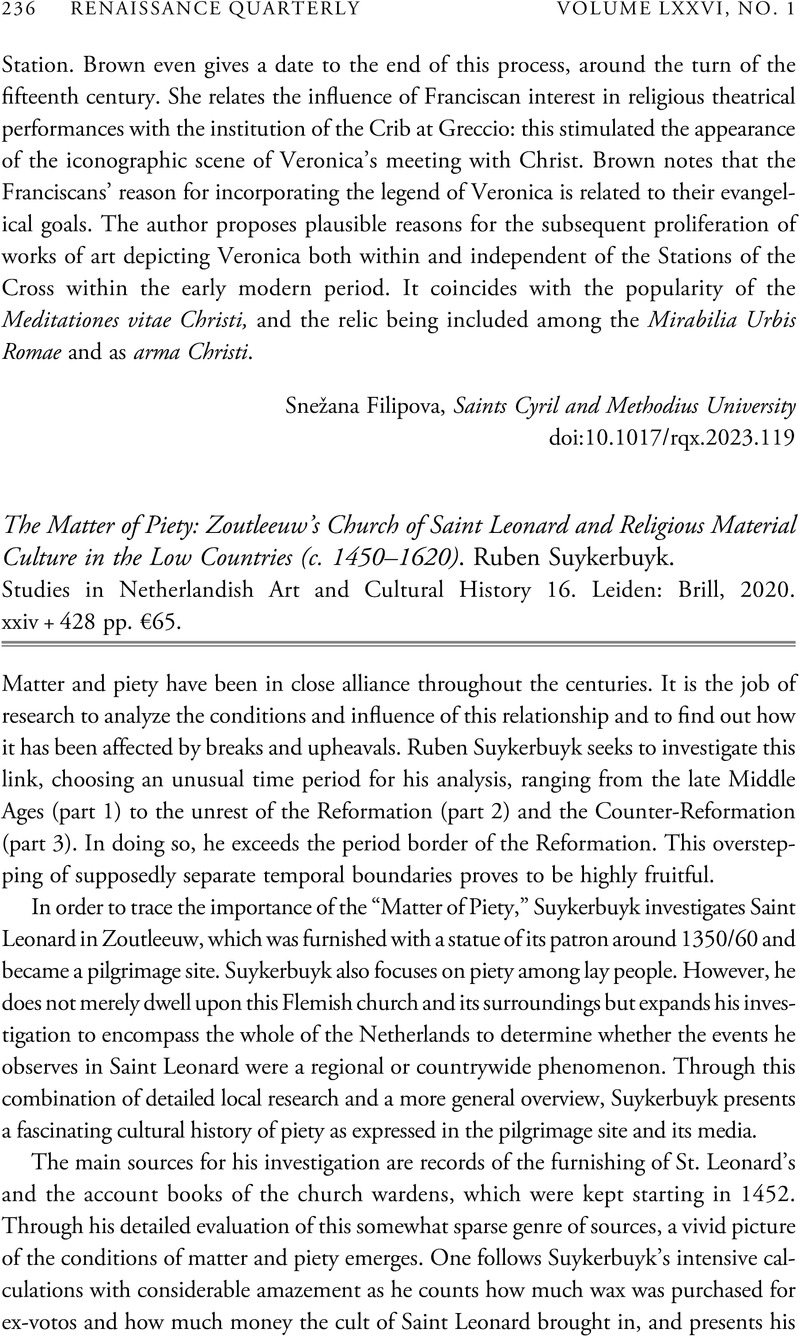No CrossRef data available.
Article contents
The Matter of Piety: Zoutleeuw's Church of Saint Leonard and Religious Material Culture in the Low Countries (c. 1450–1620). Ruben Suykerbuyk. Studies in Netherlandish Art and Cultural History 16. Leiden: Brill, 2020. xxiv + 428 pp. €65.
Review products
The Matter of Piety: Zoutleeuw's Church of Saint Leonard and Religious Material Culture in the Low Countries (c. 1450–1620). Ruben Suykerbuyk. Studies in Netherlandish Art and Cultural History 16. Leiden: Brill, 2020. xxiv + 428 pp. €65.
Published online by Cambridge University Press: 17 April 2023
Abstract
An abstract is not available for this content so a preview has been provided. Please use the Get access link above for information on how to access this content.

- Type
- Review
- Information
- Copyright
- Copyright © The Author(s), 2023. Published by the Renaissance Society of America



